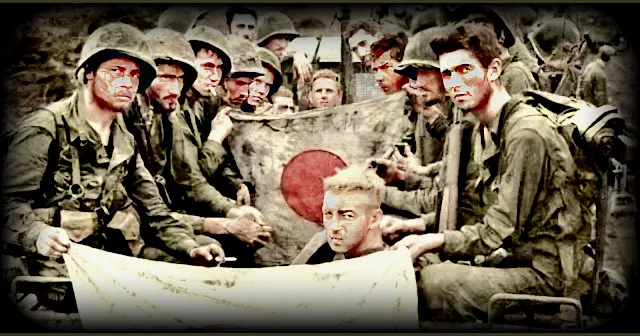Approximately 7,000 American soldiers, marines, sailors and airmen were killed in the New Guinea campaign. This figure includes the 2,102 US Marines killed during the landings at Cape Gloucester on New Britain and the fighting on Bougainville. 7,000 Australian soldiers, sailors and airmen died during the New Guinea Campaign. A total of 5,770 Australian soldiers are known to have died in Papua and New Guinea.
202,100 Japanese soldiers, sailors and airmen died during the New Guinea campaign.....


During World War II, many artists joined the military and contributed their talents as soldier-artists. Among them was George Smith, who was drafted into the Army. Smith served as chief artist for the 58th Signal Battalion in the Pacific in 1942. As the war unfolded, artists found themselves in various roles within the military. Some artists decorated barracks and mess halls with murals depicting military subjects, adding a touch of creativity to otherwise utilitarian spaces. A select group of artists became part of art programs established by the War Department in 1942 and 1943. Although the initial army project was canceled by Congress in August 1943, several artists found opportunities with major magazines and other publications.In 1944, the army reinstated an art program that lasted throughout the duration of the war. These artists documented the war through their unique perspectives, capturing both the heroism and the everyday moments. Artists weren’t limited to the Army Signal Corps.They could be found across various branches Marine Corps, Women’s Army Corps, Army Air Corps, Coast Guard Some even served in combat battalions and camouflage units. George Smith, like many others, contributed to the visual record of World War II. His artistic lens provided insights into the human experiences, struggles, and triumphs during those challenging times.









.webp)
.jpg)

.jpg)





























.jpg)




.png)
_edited.jpg)

No comments:
Post a Comment